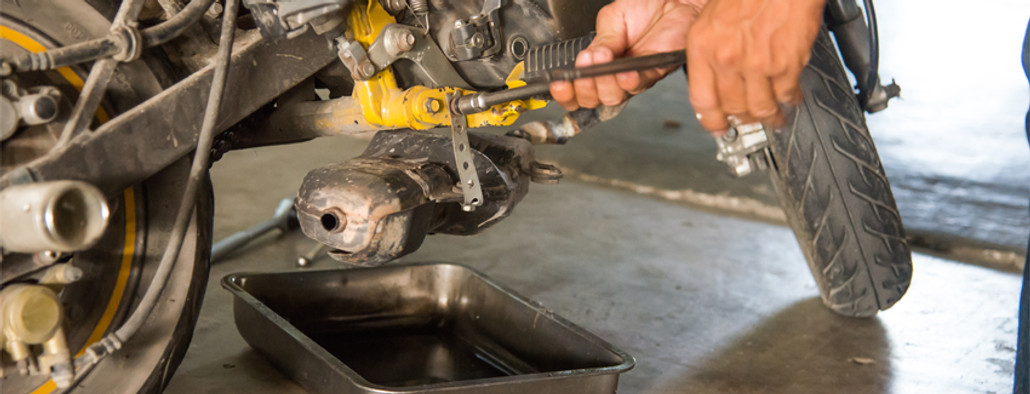Essential Guide to Engine Oils
Posted by Ben Baker on Sep 18th 2016
|
|
| Change the oil in your ride regularly. You know that, but how much do you know about the oil you put into your steel steed? |
|
|
| IT'S NOT WEIGHT |
|
|
| Motor oil is commonly sold with a "w" and some numbers. A lot of people say the "w" stands for weight. It means "winter." The Society of Automotive Engineers (SAE) came up with the numbers and the "w" for motor oil. "The numbers 0, 5, 10, 15, (20) and 25 are (sometimes) suffixed with the letter W, designating they are "winter" (not "weight") or cold-start viscosity, at lower temperature," says the Lard Oil company. |
|
|
| The higher the number, the thicker the oil is. It takes more time to flow. In colder weather, the oil won't move as fast as it does in hot weather. |
|
|
| So why do some oils have a "w" and some don't? |
|
|
| It has to do with the temperature requirements for the oil. SAE sets oil temperature requirements of 0F to 210F. Oil with a w designator meet the low temp requirements. If the oil doesn't have a w, it meets the high temperature requirements. |
|
|
| "Your engine needs oil that is thin enough for cold starts, and thick enough when the engine is hot. Since oil gets thinner when heated, and thicker when cooled, most of us use what are called multi-grade, or multi-viscosity oils. These oils meet SAE specifications for the low temperature requirements of a light oil and the high temperature requirements of a heavy oil. This is the best of both worlds and is accomplished by using special additives to increase viscosity with increase temperature," says Auto Education. |
|
|
| SO WHICH OIL? |
|
|
| Popular Mechanics says stick with what the owner's manual says. "Modern oils are very effective across all temperature ranges, and new engines are designed and tested to work specifically with only the type of oil listed in your owner's manual." |
|
|
| But what about older motors? |
|
|
| Over the years, the way oil is graded and formulated has changed a bit. "Grade is very important for these older bikes because of the bearing clearance. For example, instead of using a 10W-30, the owner should go to a 20W-50. Start on the 20/50 V Twin type oil, which is essentially a 50-weight, for older loose engines," said Ray McDonald, an adviser for Exxon Mobil's lubricant division. |
|
|
| So if you're not sure what to use, talk to a good bike mechanic. |
|
|
| SYNTHETIC V. MINERAL |
|
|
| Mineral "natural" oils are the ones pumped out of the ground. Synthetics are made in a plant. Some oils are a blend of both. |
|
|
| "Mineral oils are basic spec oils that are made from natural oils. They are generally suitable for commuting, touring bikes and some older bikes. They are not normally suitable for some modern bikes that require a higher oil spec (especially high temperature, small oil sump bikes) or for most racing and competition use or where engine oil service/change periods might be exceeded," says White Dog Bikes. |
|
|
| "Where you live is an important consideration in your choice of oil because of climate considerations and oil flow rates. And synthetic oils definitely hold an advantage in the cold-weather department. High-viscosity conventional oils simply don’t flow in cold temperatures, and even low-weight conventional oils stop flowing at around 34 degrees Fahrenheit," says Lowell Anderson. |
|
|
| Bottom line on this? Go with what the manufacturer says. If you are riding an older bike, then check with a good bike mechanic. There's just no one-size fits all. |
|
|

